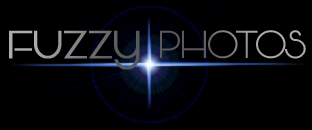| Image Links | |
| Published image | Full resolution |
| Annotated image | Pop up preview Full resolution |
| Target Information | |
| Main Target Designations | Aurora Borealis |
| Companion Objects | Hercules, Corona Borealis, Bootes |
| RA Center | 15h 58m 27.596s |
| DEC Center | +34° 13' 32.29" |
| Exposures | |
| One-shot Color | 1 x 8' |
| F-number | f/1.8 |
| Sensitivity | ISO200 |
| Focal Length | 17mm (m4/3 crop) |
| Date(s) of acquisition | 29Dec2016 |
| Location | Healy, AK |
| Equipment | |
| Imager | Olympus E-P5 |
| Telescope/Lens | M.Zuiko 17mm f1.8 |
| Mount | Stationary Tripod |
| Accessories | |
| Shutter | RFN-4 (RF-902) Wireless Release |
| Software | |
| Processing | Photoshop, PixInsight 1.8 |
Sometimes the wildest celestial events happen within our own atmosphere!
My wife and I had the opportunity to trek to Alaska in the dead of winter over the new year. Â Atop visiting the amazing cold weather destinations in middle Alaska (Denali, the North Pole, and on), one of the top reasons for our trip was to behold the spectacular Northern Lights -- and our trip delivered! Â During our 8 day stay, we had 2 nights of clear weather. Â Our first resulted in this photo when we witnessed the Aurora Borealis for the first time, and this just outside Denali National Park in Healy, AK, making for a dramatic mountainous backdrop.
The aurora is caused by an interaction between the solar wind (energy from our sun) and charged particles in our atmosphere. Based on the solar activity, the "strength" of the auroral activity can vary greatly.  This activity is measure on the Ka scale, with lower numbers representing lower activity (the lowest being 0) and higher number representing greater and farther reaching displays (with 5.0 Ka potentially resulting in overhead displays as far south as Chicago).  On this night, the activity was about as low as it tends to get at 1.65 Ka, but due to our very northern latitude, we still got to experience even these low levels with very high satisfaction.
Just like deep space photographs, the longer I exposed the camera, the more auroral glow I was able to capture.  An 8 second exposure helped a lot with this low level display, though I kept the sensitivity low (ISO200) to aid in a lower-noise horizon backdrop without the need for a false-composite.  And due to this longer exposure, we also get a nice backdrop of stars behind the aurora, with the constellations Hercules, Corona Borealis, and Bootes all present here.  See the annotated photograph for the exact locations.
We had another (better) night of the Aurora Borealis, which I have available in other posts. With the way the aurora evolves, each photo gives a different unique look!

